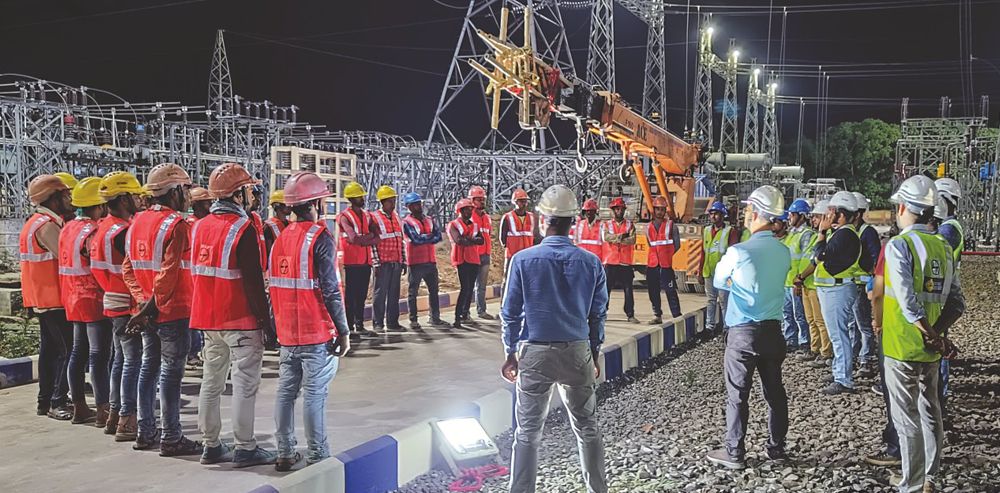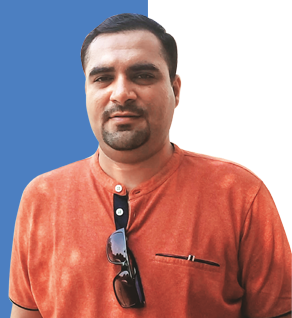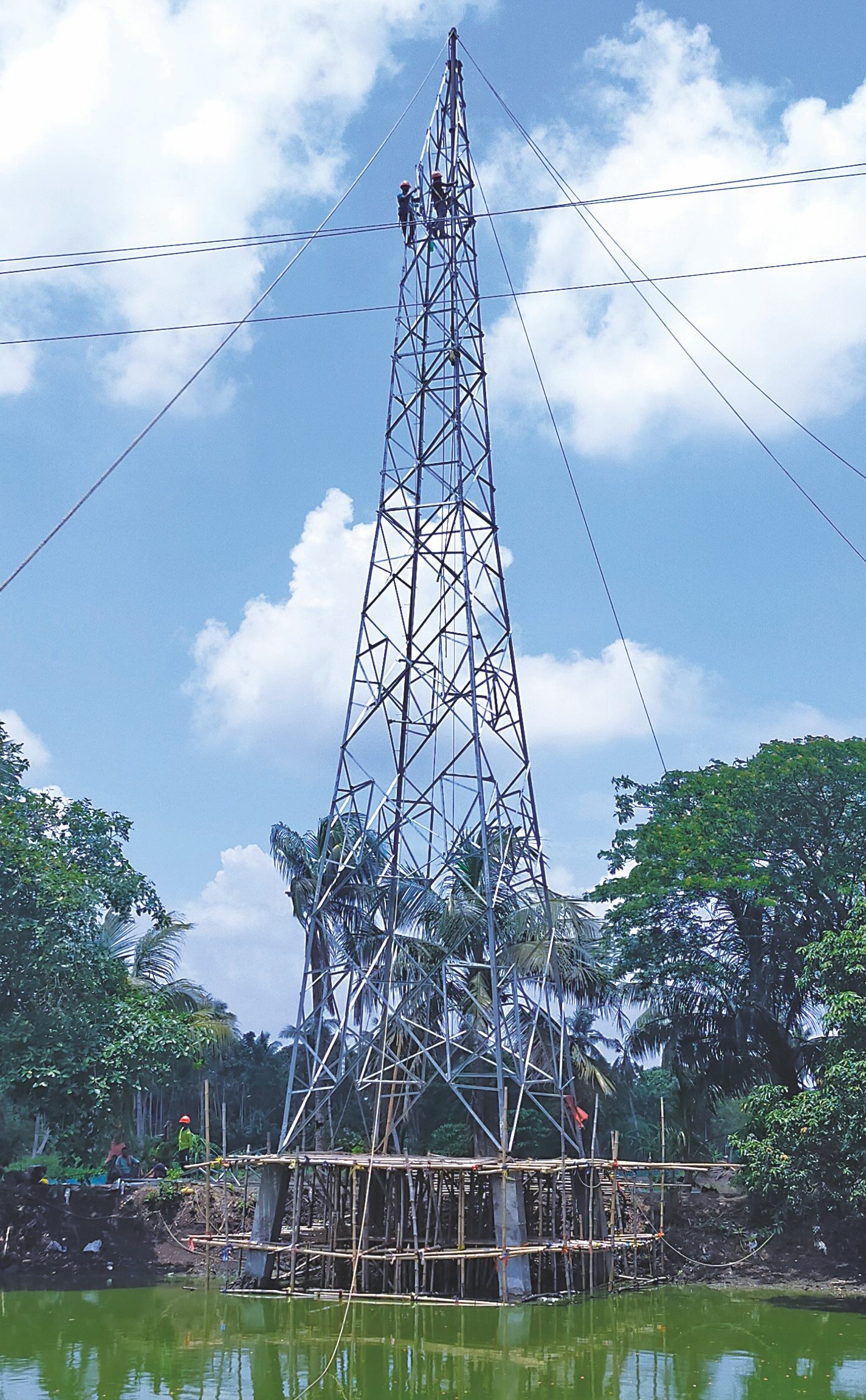4 lines. 4 different sets of risk factors.
WBSETCL Package project team holding strong.

Line 1 — Shutdown work at night inside substation premises. Most stringing operations were completed safely at night

We have adopted the conventional method of cofferdam to execute and created a platform of bamboo to reduce the constant exposure to water which has reduced absenteeism and improved productivity.
Sourup Banerjee
ESHO


Project Manager, Akash Makwana; EHSO, Sourup Banerjee; and the team at PT&D IC’s 132 kV & 220 kV WBSETCL Package-AT Project have learnt the hard way that challenges can come in all shapes, sizes, and forms. Mandated to lay four transmission lines in four districts of West Bengal, the team is facing some unique and different challenges to deliver. While Line 1 is being constructed in the densely populated 24 North Parganas district, inside a ‘live’ substation, Line 2 is within the confines of an industrial estate that is also a logistics hub. Line 3, in the Nadia district, is in an area that experiences heavy rainfall with a very high water table, while Line 4 is in a remote Himalayan forest area near Bhutan. “Although our challenges are many and varied, we have one objective: Mission Zero Harm,” says a determined Akash, “and we are doing everything possible to maintain our safety record. It is still 100%!” he smiles.

Although our challenges are many and varied, we have one objective: Mission Zero Harm and we are doing everything possible to maintain our safety record. It is still 100%!
Akash Makwana
Project Manager


Different strokes for different challenges
Challenge 1: Line 1 The initial issues for the team at Line 1 was to construct right in the middle of a busy township, with unauthorized access of villagers to the site, which they arrested by barricading the premises.
“To construct two towers in the middle of a ‘live’ 132 kV induction switchyard, we first decided on our methodology in consultation with EDRC and the technical head,” points out a seriouslooking Akash. “Apart from preparing a separate HIRA, we have briefed both the supervisors and workmen about the dos and don’ts to prevent electrocution.” He adds that the plan and load charts have also been similarly prepared.

Line — 2 being executed in the middle of a logistics hub
Erecting a 55 m tower just 7 m from a ‘live’ 220 kV line was an extremely risky proposition for Sourup. “Being within the induction range, we could not use cranes and had to go with the conventional method of derrick pole, balancing the weight without any guying pole arrangement,” he explains. Cleverly, most of the stringing was completed by a specialized team at night between 1 am and 5 am following all the proper protocols, when the demand for power was low and the switchyard was partially shutdown. He mentions that the foundation too was carried out with RMC with a pumping arrangement to avoid human intervention during the foundation work. Sourup’s relieved smile says that the entire process was successfully completed.
Challenge 2: Line 2 This line will replace and join the existing 220 kV Howrah–KTPP line, and work is taking place at the Foodpark Substation, inside the Sankrail Industrial Estate, which is also the logistic hub for several e‑commerce companies. The task to replace the tower is proceeding in the middle of constant fleet movement in a cramped 10×12 m area that requires at least nine 1.2 dia. piles for the foundation works. “There is not even space to place the piling rig,” says Akash, motioning with his hands how little space they must work with, “but we have erected a 62 m tall tower alongside a ‘live’ line without a shutdown and any untoward incident.”
Challenge 3: Line 3 Most of the towers in Line 3 are situated in a pond, with the result that foundation work has been a major issue. Working for long periods in stagnant water, the team faces constant danger of soil collapses, water collecting inside the pit, and health problems with workmen frequently falling ill with fever, cold, and cough, and even suffering from itching and rashes. “We have adopted the conventional method of cofferdam to execute and created a platform of bamboo to reduce the constant exposure to water,” remarks Sourup, “which has reduced absenteeism and improved productivity.”

Line 3 — Tower erection in a water-logged area with a proper platform of bamboo
Challenge 4: Line 4 Project monitoring and control are the primary issues of erecting Line 4 in the middle of a forest. The team has deployed specially trained safety stewards to keep away wild animals from the site, and Akash is delighted that they are on the verge of completion with their 100% safety record intact.

Line 4 — Electrified railway crossing completed within time in coordination with railway authorities
“We have ensured that, irrespective of its nature, all works are being executed with approved DWPs in the SHEiLD app,” concludes Akash. “Considering the hazards in such high-risk activities, we had a special drive to capture leading indicators through SHEiLD by everyone at site, and our proactive approach has helped prevent accidents. It is true that proper planning of works not only ensures safety but improves productivity at site as well,” he smiles.